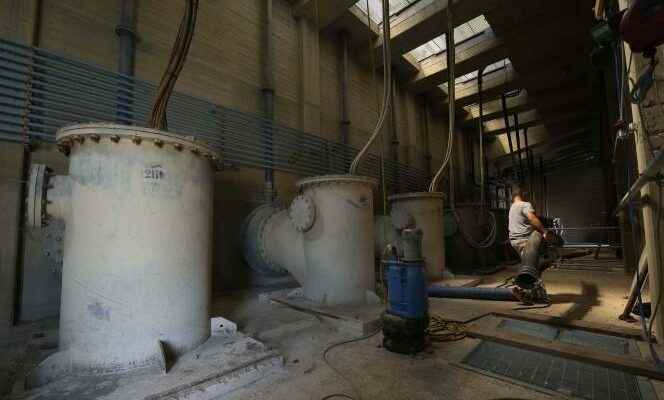In March, schools remained closed in about twenty municipalities in the province of Chieti, in Abruzzo (center), the supply of water having been interrupted due to repair work on pipes. A week later, it was only intermittently available to homes in the area. “I stopped posting water cut notices on my Facebook profile because people told me there were water cuts every night anyway,” confided then, annoyed, Filippo Paolini, the mayor of Lanciano, one of the affected municipalities. This episode is revealing of water wastage in Italy, an evil which is not new but which is resurfacing with acuteness as the Peninsula is hit by a historic wave of drought.
“Italy is a country that has made water a sad example of its inability to intelligently manage a resource crucial to our survival and well-being,” castigates the organization World Wide Fund for Nature (WWF), which in recent weeks has sounded the alarm several times over the loss of water. “The Italians consume, but it might be better to say ‘waste’, more water than all Europeans, continues the NGO, with an average daily individual consumption of about 220 liters of water. »
According to data from the Italian National Institute of Statistics, more than 40% of the water flowing through Italian pipes is lost in transit. In a third of the main cities of the country, the dispersion rate even exceeds 45%. The province of Chieti holds the sad national record with a 70% loss. Among the most affected regions are also Sicily or Basilicata (southern Italy).
Race against time
The main problem lies above all in the obsolescence of the installations: 60% of the Italian pipeline network is more than thirty years old, and 25% of these pipes were laid more than fifty years ago. The local press regularly chronicles the ruptures of pipes, transforming certain streets into rivers, as very recently still a stone’s throw from Saint Peter’s Basilica, in Rome, where the garbage cans were carried away by the waters, under the dumbfounded eyes of tourists.
The standardization project is proving to be titanic, Italy having a network of more than 500,000 kilometers of pipes, but the government, on the strength of its investments, aims to reduce water losses by 15% of by 2026. The National Recovery and Resilience Plan (PNRR), which sets the objectives until that date, provides for a budget line of nearly 4 billion euros to protect water resources, including 900 million for maintenance infrastructures.
You have 44.36% of this article left to read. The following is for subscribers only.
